
On Feb. 29, Marty Kedian made history by successfully undergoing a groundbreaking surgery at Mayo Clinic that is providing hope to thousands who have lost their voice and ability to swallow and breathe on their own due to diminished laryngeal function or total loss of their larynx.
This is the third known larynx transplant in the U.S. and the first known case performed on a patient with an active cancer as part of a clinical trial. It is also Mayo Clinic’s first total larynx transplant. The multidisciplinary team, including six surgeons, was led by Dr. David Lott, chair of the Department of Otolaryngology (ENT) – Head and Neck Surgery/Audiology at Mayo Clinic in Arizona. Dr. Lott also leads Mayo Clinic’s Larynx and Trachea Transplant Program.
Experts say the larynx transplant at Mayo is a pivotal milestone in making the rare procedure available as a scientifically proven, safe and effective procedure for a wider population.
For Marty, it marks the beginning of his quest to break the silence on laryngeal transplantation.
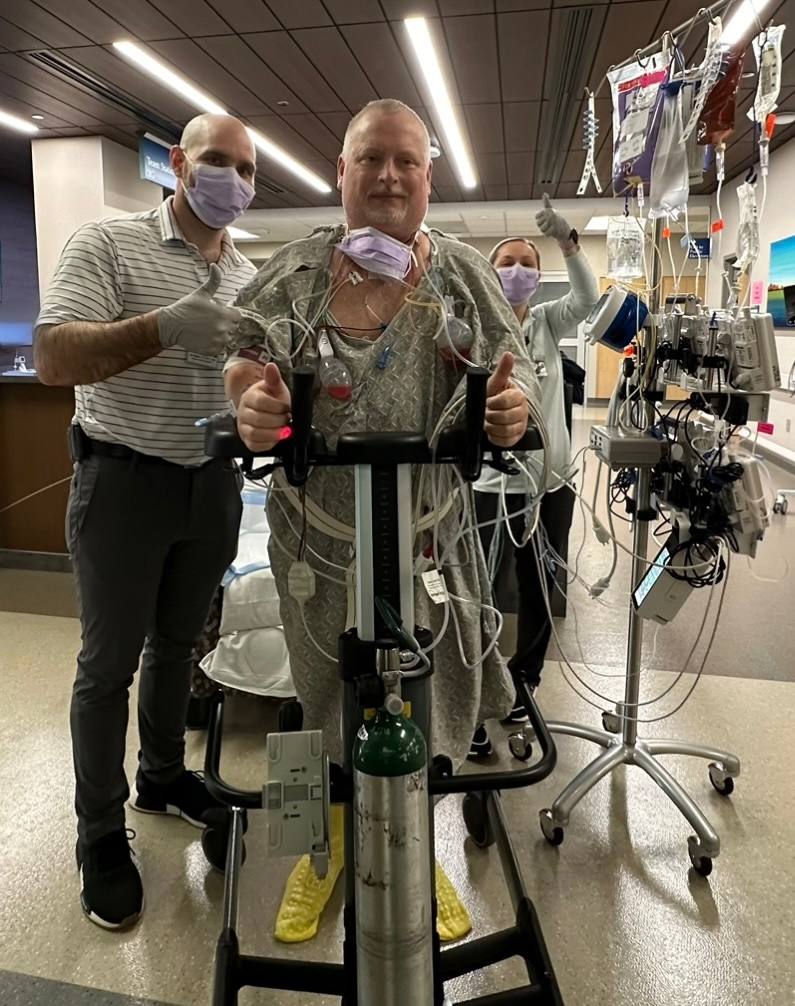
A multidisciplinary team, including six surgeons, conducted the 21-hour transplant. Four months after surgery, Marty has regained use of his voice and his ability to swallow and breathe on his own, exceeding the transplant team’s expectations.
Watch: Breaking the silence: Man achieves dream of getting his voice back in world’s first known total larynx transplant on a patient with an active cancer as part of a landmark clinical trial
Journalists: Broadcast-quality video pkg (5:15) in the downloads at the end of this post. Please courtesy: “Mayo Clinic News Network.” Read the script.
Silenced by cancer
“I love to talk to people everywhere I go,” says Marty. “I’m that guy at the baseball game who doesn’t know anyone sitting around them. And by the end of the game, I’m friends with everyone in my section.”
Marty’s world changed in 2013 when he went to the doctor after noticing he was having trouble swallowing his food. “Food was getting caught in my throat. I thought I had allergies. I didn’t really think anything of it,” recalls Marty.
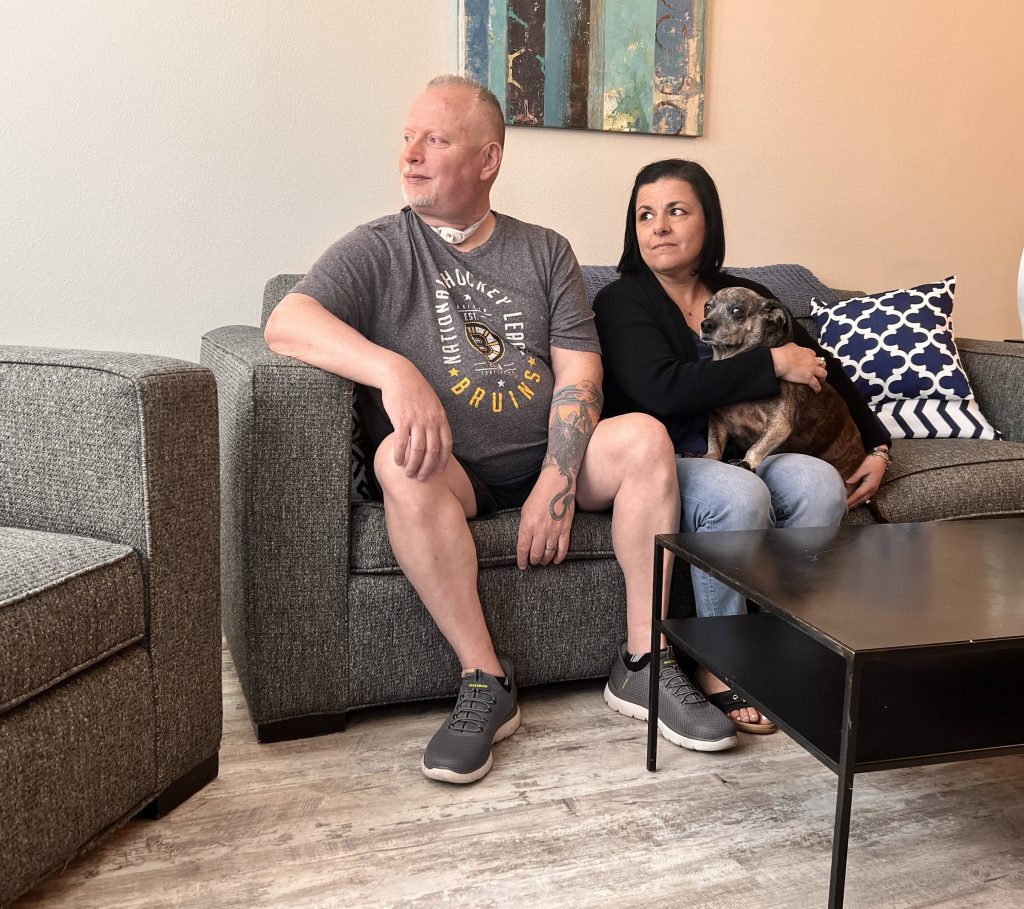
A series of tests revealed Marty had a rare form of laryngeal cancer called chondrosarcoma. Doctors told Marty he needed surgery. “It was a shock,” recalls Marty. “It was devastating. I wasn’t going to die, but I had a job that required me to talk to people all day long.” For 35 years, Marty worked at a local print shop speaking with customers in Haverhill, Massachusetts, where he lives with his wife, Gina, and their family.
Marty underwent his first surgery in 2014. Over the next 10 years, dozens more followed, reducing Marty’s voice to a raspy whisper. No longer able to breathe on his own, Marty underwent surgery to have a tracheostomy tube inserted so he could breathe through a hole in the front of his neck.
“Everywhere I went, the first thing people would ask me is, ‘How many cigarettes did you smoke a day?’ I never smoked a cigarette in my life,” says Marty. “People would immediately shut down and back away from me. After a while, I just didn’t want to go out anywhere. I was alive, but I wasn’t living.” Marty was eventually told his last option was a total laryngectomy, or removal of his voice box. He declined. “I didn’t want a laryngectomy. I wanted to find a way to get my quality of life back,” says Marty.
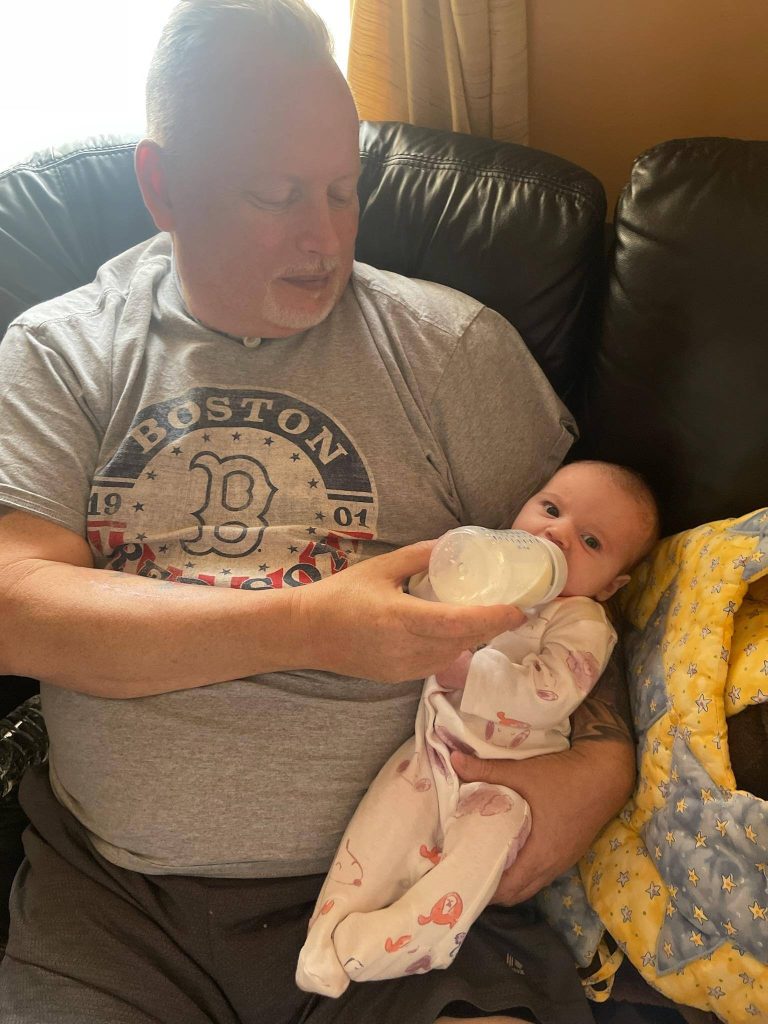
“I just had my first grandchild. I wanted to be able to talk to her with my own voice, play with her in the yard and take her to baseball games and breathe normally. Gina knew I was already depressed and out of my mind. She kept saying there had to be another way. She went online, and that’s when she found Dr. Lott.”
Finding hope at Mayo Clinic
Thousands of miles from Marty’s home, at Mayo Clinic in Phoenix, Dr. Lott was leading a team of scientists researching laryngeal restoration and transplantation. Dr. Lott is an ear, nose and throat surgeon who specializes in laryngeal surgery. For the past two decades, Dr. Lott and his team have been investigating ways to restore and save a person’s voice and laryngeal function.
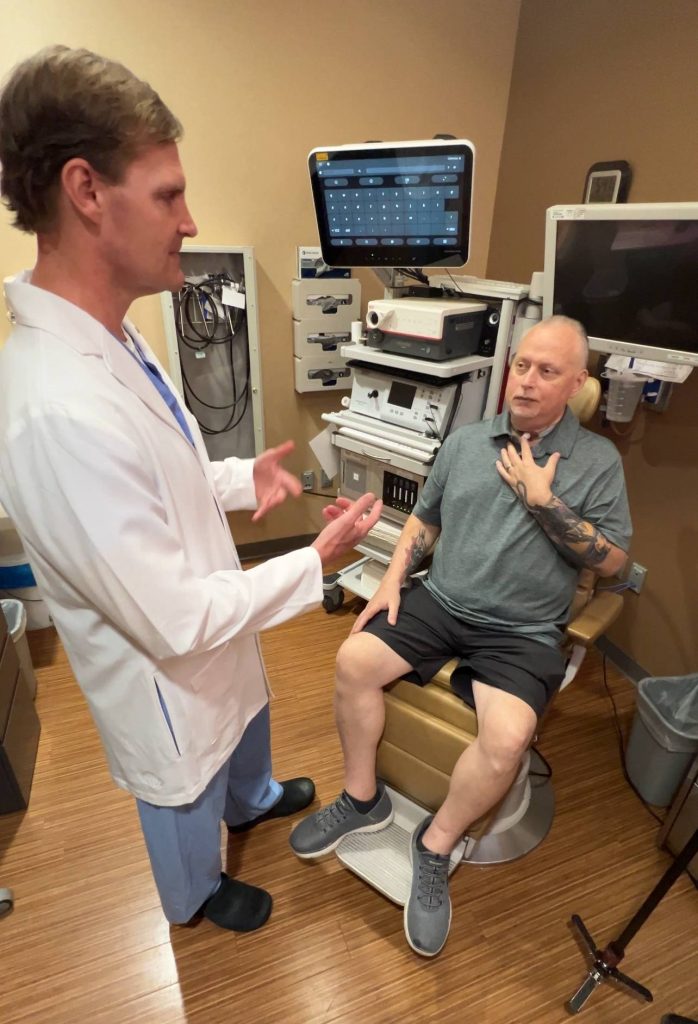
“I set my path on becoming a laryngeal surgeon and researcher to build a program that is pushing the boundaries of science forward,” explains Dr. Lott.
“Nobody really thinks of their larynx until it’s gone,” says Dr. Lott. “Then your ability to speak, breathe and swallow is gone, and you are left breathing through a hole in your neck. It is very isolating, and many become a shell of who they used to be. I wanted to find a way to help restore a person’s quality of life.”
In 2016, Dr. Lott’s program was granted approval to conduct the first clinical trial in the U.S. on laryngeal transplantation. “Until now, laryngeal transplants have been done as on-offs,” says Dr. Lott. “This clinical trial allows us to conduct a true scientific investigation aimed at thoroughly researching the safety and efficacy of laryngeal transplantation as a trusted option for patients.”
One of the biggest challenges to advancing laryngeal transplantation as an option for cancer patients like Marty has been the risk associated with the use of immunosuppressive therapy. Transplant patients are given immunosuppressive drugs to lower the body’s immune response, which reduces the risk of organ rejection. However, immunosuppression also increases the risk of the cancer spreading. Marty was already on immunosuppressives due to a kidney transplant years ago.
“Having a patient with an active cancer who already has his own immune suppression allowed us to do the transplant safely without introducing additional risk in a way that has rarely, if ever, been done before,” says Girish Mour, M.B.B.S., medical director of the program.

Removing the cancer was the surgical team’s main priority. “First, we removed Mr. Kedian’s cancerous larynx,” explains Dr. Lott. “Then, with the confidence of our team that the cancer was gone, we focused on the transplant. The entire procedure went better than we expected.”
In addition to the larynx, surgeons transplanted the pharynx, upper trachea, upper esophagus, thyroid and parathyroid glands, blood vessels, and nerves.
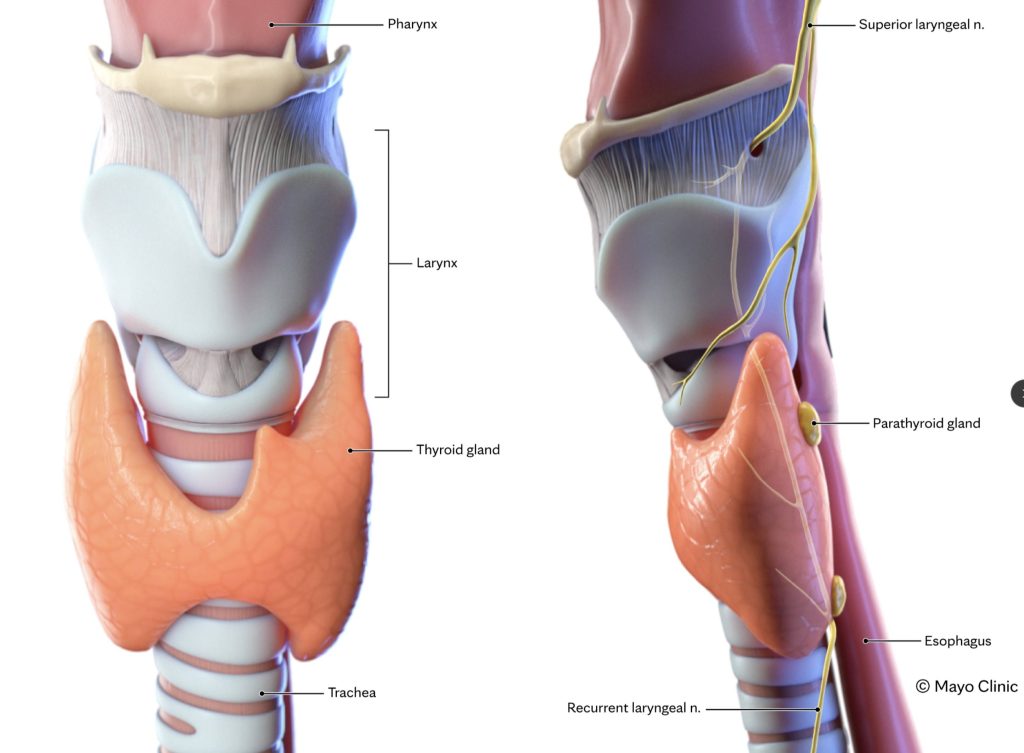
Four months after his transplant, Marty regained 60% of his voice. Doctors say it will continue to improve as he heals over the next year. He has also regained the ability to swallow and breathe on his own. “It is truly amazing,” says Marty. “Dr. Lott and the team at Mayo have not only given me my voice back, they’ve also given me my life back.”
Speech and swallow therapy at Mayo has been a significant part of Marty’s recovery.
“Marty’s progress is remarkable,” describes Dr. Lott. “He is eating hamburgers, macaroni and cheese, almost anything with no problem. His breathing also continues to steadily improve.” Doctors plan to remove the tracheostomy tube when Marty regains full function of his ability to breathe on his own.
A paper by Dr. Lott on the case was published July 9 in the peer-reviewed medical journal Mayo Clinic Proceedings.
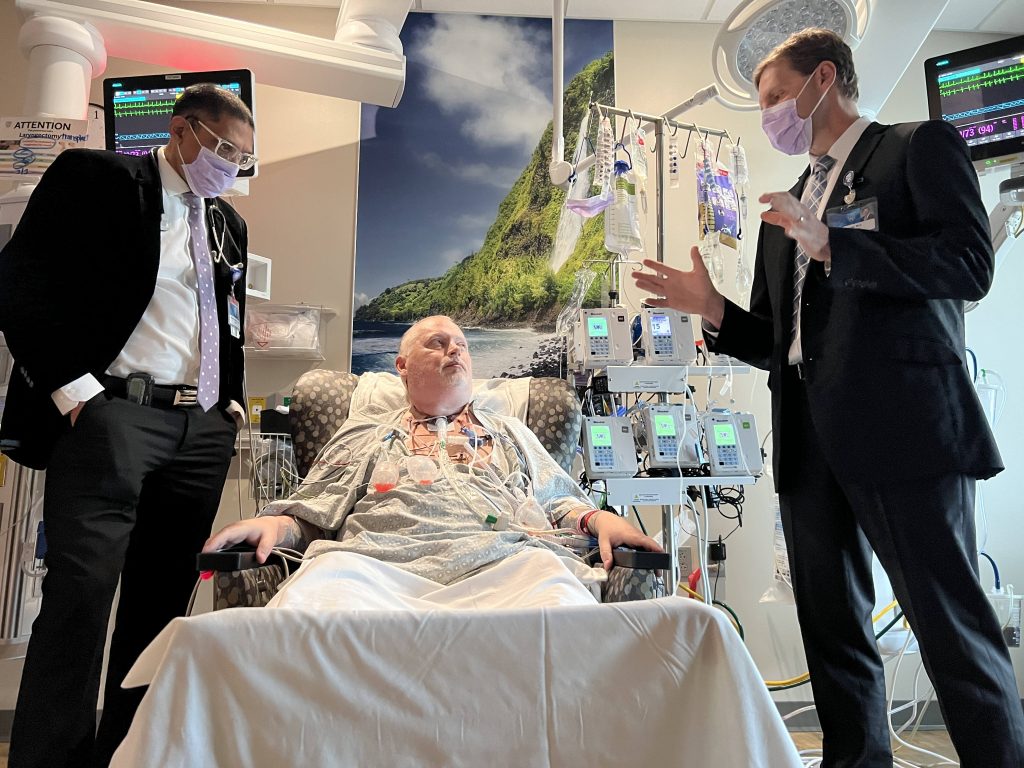
“The case signifies a monumental breakthrough,” says Dr. Marshall Strome, who performed the world’s first successful larynx transplant in 1998. “It represents the future of laryngeal transplantation where every patient needing a total laryngectomy will have the option of a reconstruction that allows them to maintain their quality of life.”
Dr. Lott did some of his early training under Dr. Strome. Since then, Dr. Strome has remained a trusted mentor to Dr. Lott. In a full circle moment, Dr. Strome was present when Dr. Lott performed the transplant at Mayo in February.
“With the clinical trial underway, Dr. Lott and his team are positioned to advance the field in ways no other program can currently achieve. The Mayo team has discovered the holy grail for managing laryngeal cancer, which I believe will come to fruition by the end of this decade,” says Dr. Strome.
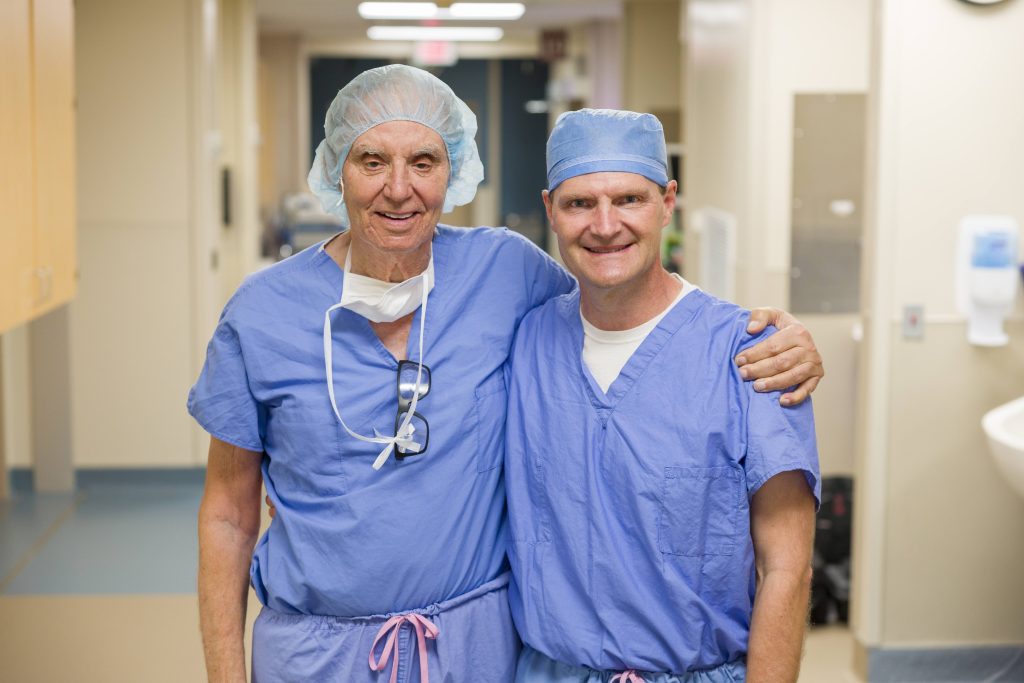
Less than five months after surgery, Marty and Gina are excited to return home to Massachusetts. “We couldn’t have done this without everyone’s love and support,” says Gina.
“I will always be grateful to the team at Mayo and especially for the generosity of my organ donor and the donor family,” says Marty.
Dr. Lott’s clinical trial is approved to perform additional larynx transplants in the coming years.
Marty is looking forward to doing what he loves most — talking to family, friends and everyone else he meets. He is especially looking forward to talking with his granddaughter, Charlotte.
“I will be reading her lots of bedtime stories,” says Marty. Meanwhile, Marty also is planning to share his own story to inspire others.
“My first job is to get better,” says Marty. “My next job will be to tell everyone they can do it too.”
Additional resources:
